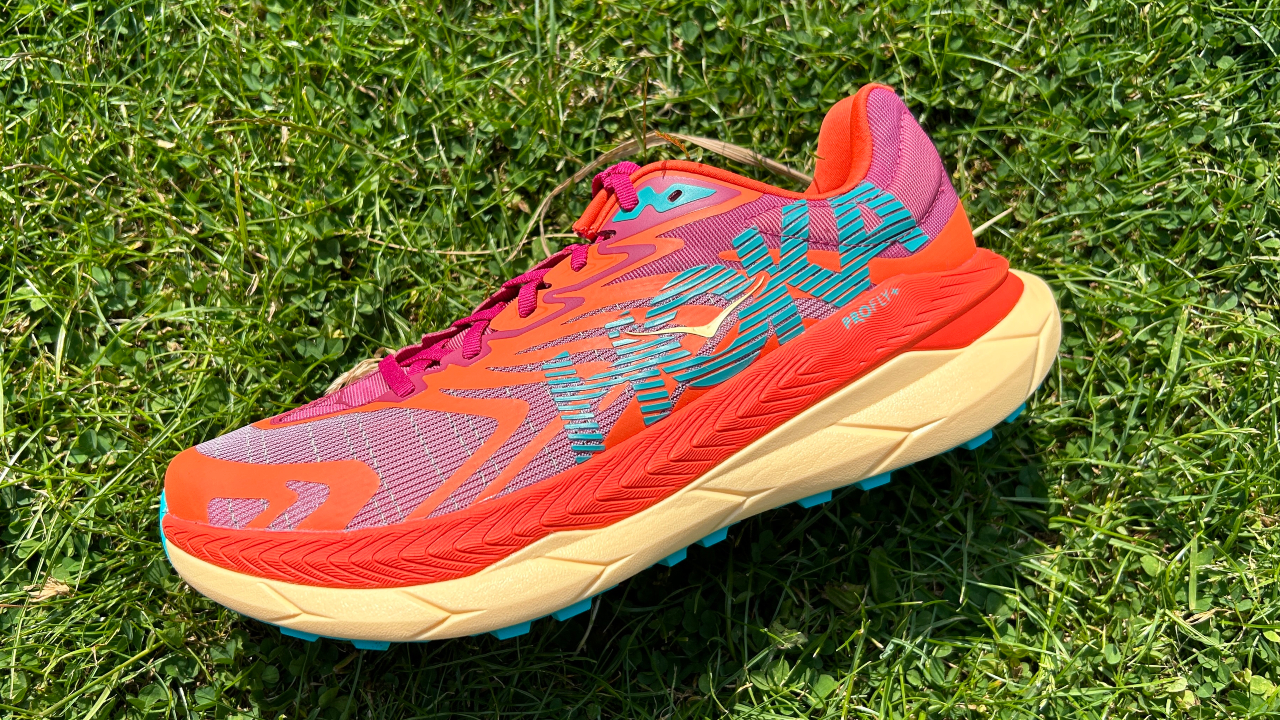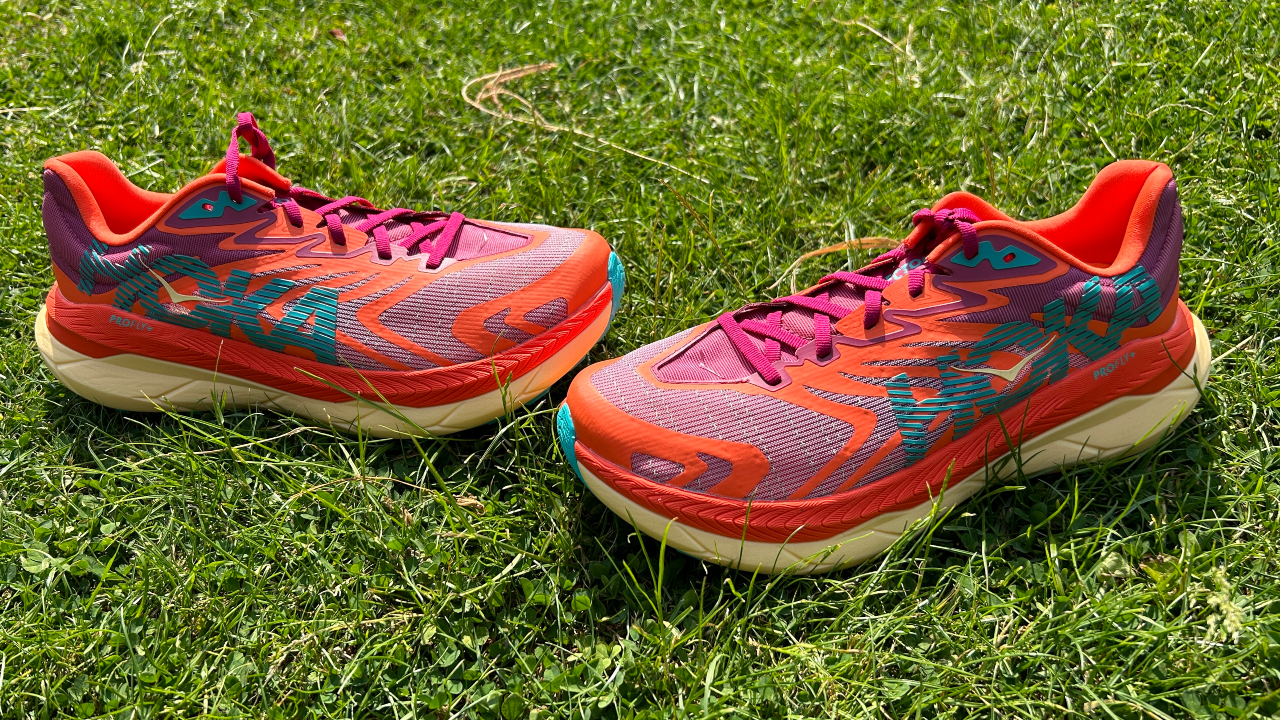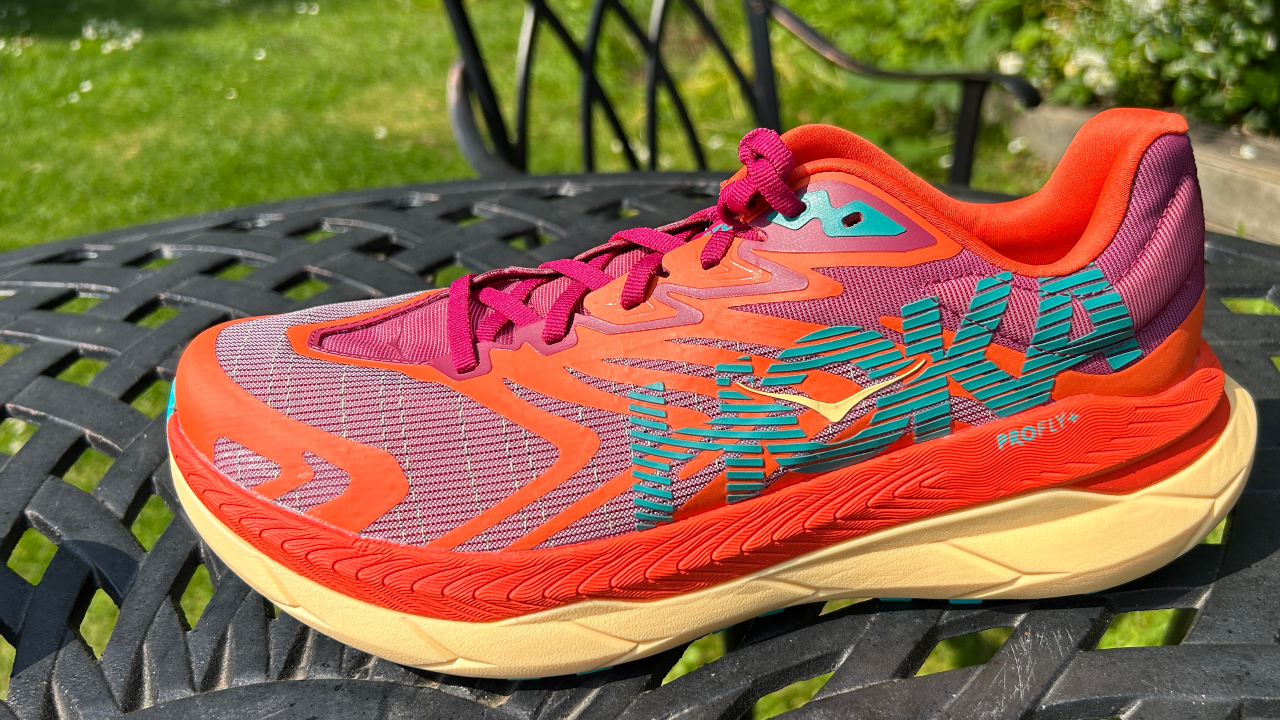Our Verdict
The Hoka Tecton X2 is an excellent trail-racing shoe, with its parallel carbon plates adding extra pop to your off-road runs. It’s similar to the Tecton X, however, with the only changes in the upper, which means the rise in price may be hard to swallow.
For
- Improved upper
- Fast, comfortable ride
- Grips on variety of trails
Against
- Similar to Tecton X
- High price
You can trust Coach
The original Hoka Tecton X was one of the first shoes to successfully incorporate into a trail racer the carbon plate tech that works so well in road shoes. It was one of the best trail-running shoes available, and that remains the case with the Hoka Tecton X2, which sticks to the same design as the original.
Hoka has changed the upper on the shoe to create a more secure fit, but underfoot the midsole and outsole are the same. A marginal improvement is fine for a second-gen shoe, but it’s a shame Hoka has bumped up the price of the Hoka Tecton X2, and this may mean hunting for a deal on the Tecton X is a smarter option for runners.
Hoka Tecton X2 Review: Price And Availability
The Hoka Tecton X2 launched in April 2023 and costs $220 in the US and £185 in the UK. The original Tecton X cost $200/£175, and is now in sales. The Tecton X2 is one of the most expensive trail shoes on the market, though still (a little) cheaper than most of the best carbon plate running shoes for the road.
Design And Fit

The new Matryx upper on the Hoka Tecton X2 is made from a fast-drying material that is light and breathable. Compared with the mesh used on the Tecton X it feels airier, though that is also partly because the toe bumper has been reduced in thickness.
Hoka has changed the laces on the shoe so they don’t extend so far down into the toe box. I had no concerns with the upper on the original Tecton X, but the fit feels more secure on the Tecton X2. I like the fit of the shoe in my normal UK size, 9 (it’s a US 9.5, whereas I normally have a US 10), but I have a narrow foot and some may find it too snug.
The ProFly X midsole has the same dual-density set-up as the Tecton X, with two layers of gas-infused EVA foams, the one on top being slightly softer. Sandwiched between those layers are the thin carbon plates, which run in parallel down the length of the shoe.
This differs from the full plate you’ll see in road shoes—which provides increased stiffness and propulsion on the road—but on trails you need more flexibility to take into account uneven ground, so the plate set-up in the Tecton X2 is designed to give pop without sacrificing stability and flexibility.
Sign up for workout ideas, training advice, reviews of the latest gear and more.

Another difference from carbon road shoes is that the Tecton X2 doesn’t have a high stack of foam in the midsole. The shoe has a 5mm drop and the men’s shoe is 32mm at the heel and 27mm at the forefoot, while the women’s is 30mm at the heel and 25mm at the forefoot.
While the 4mm lugs on the Vibram Megagrip Litebase outsole are short, flat and broad (which indicates the shoe is mainly designed for harder trails), I found the Tecton X versatile on the trails. It gripped well in dry and wet conditions. That will be the same for the Tecton X2, which I’ve used only on dry trails so far. It’s never going to be a great option for the mud, though it does the job on most terrains.
How I Tested This Shoe
I’ve run 30 miles (about 50km) in the Hoka Tecton X2 across four runs, all in dry conditions. I have been on a mix of terrains, including grass, gravel and hard-packed forest paths, along with the road to and from my local trails. I ran at a mix of paces. I have also tested the Tecton X, as well as other carbon plate trail shoes such as the Saucony Endorphin Edge and The North Face Summit Vectiv Pro.
Running Performance

As with the Tecton X, I took the Tecton X2 out for a long run for my first outing in the shoe. Like its predecessor, it didn’t feel amazing immediately. It was somewhat stiff and didn’t have the wow factor of a soft, springy carbon road shoe. But it was comfortable over 10 miles on a variety of trails, it was stable at slow speeds, and it gripped well.
After a couple of runs, the midsole had softened and the stiffness disappeared, leaving a flexible ride with a little softness and some welcome punch from the carbon plates when you hit your straps on flatter, tamer rails.
I’ve done a couple of progression runs in the shoe, working from easy paces down to around 5min 55sec/mile pace on undulating dirt tracks and, without ever feeling dramatically fast, the Tecton X2 ticks over nicely at speed. It’s nimble on narrow trails, and the grip and stability of the shoe give you the confidence to really bomb downhills.
Is The Hoka Tecton X2 Worth It?
The Tecton X2 is another very good trail shoe from Hoka, and a slight upgrade on the original. However, I’m not sure the improved upper is enough to merit its price rise. Unless you had problems with the fit of the Tecton X, I’d opt for the older shoe if you can find it for less.

Of the other carbon trail shoes I’ve tested, it’s closer in feel to the Saucony Endorphin Edge than The North Face Summit Vectiv Pro. The latter being softer, highly rockered, and feeling more like a road shoe. The Saucony has better grip on soft ground and a bouncier midsole foam, while the Tecton X2 feels more nimble on tricky trails; I prefer it for going uphill.
Choosing between the three, I marginally prefer the Hoka and the Saucony to the Summit Vectiv Pro, which doesn’t have great grip and is heavier—though it might be more protective for long ultras.
A bigger question might be whether it’s worth buying a carbon plate trail shoe at all. They offer a performance boost, it’s just that it is not as dramatic as with carbon road shoes. You can get equally good trail-racing options for long distances, like the Hoka Speedgoat 5 and Saucony Xodus Ultra 2, for a lot less.

Nick Harris-Fry is a journalist who has been covering health and fitness since 2015. Nick is an avid runner, covering 70-110km a week, which gives him ample opportunity to test a wide range of running shoes and running gear. He is also the chief tester for fitness trackers and running watches, treadmills and exercise bikes, and workout headphones.

